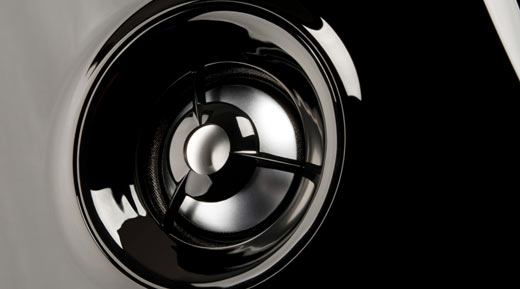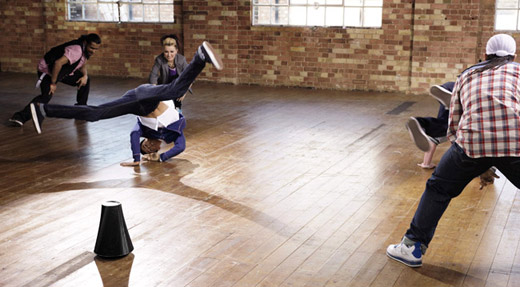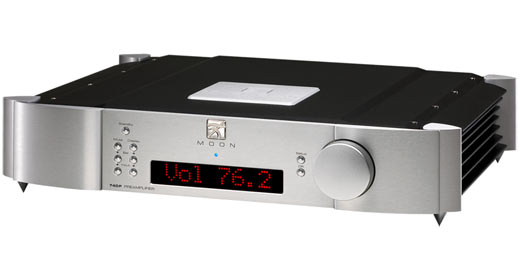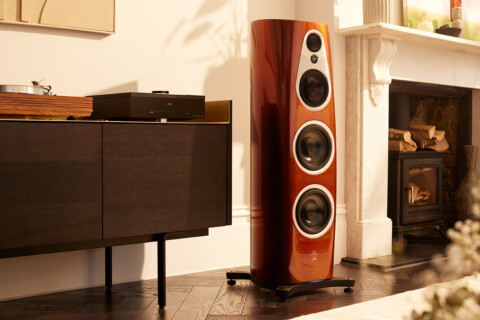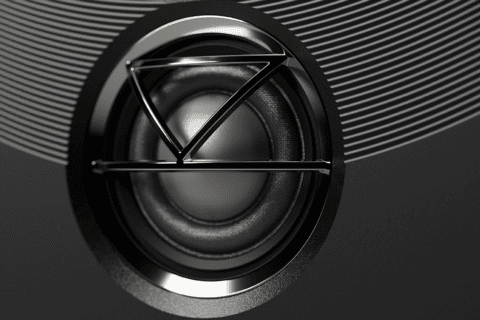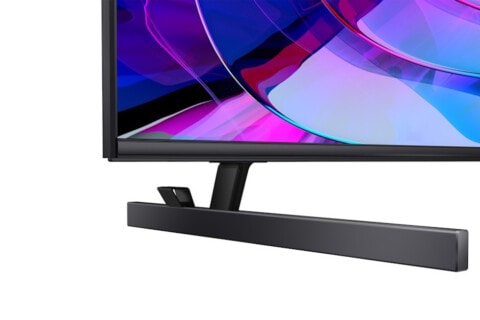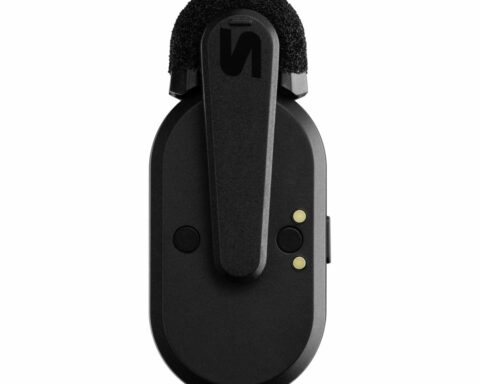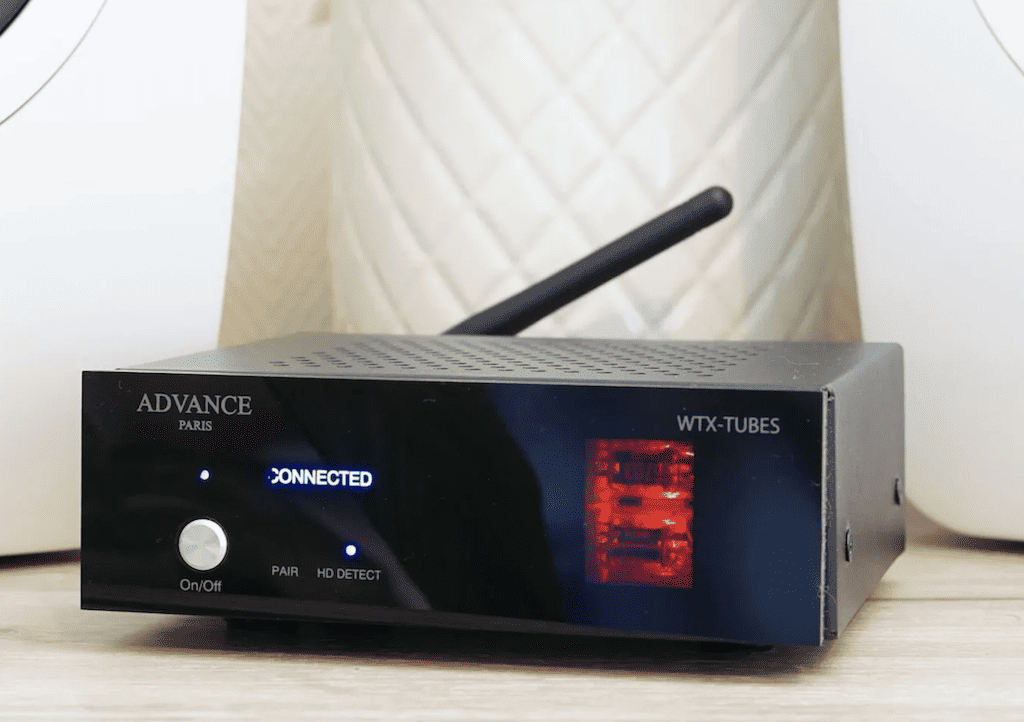$899 each
4 Stars
A pair of speakers that’s as American as the stars and stripes and strong filter coffee, and an exciting, dynamic listen
DEFINITIVE TECHNOLOGIES IS one of those loudspeaker manufacturers that’s instantly recognisable as being American. Like JBL, Klipsch, Infinity and Cerwin Vega, there’s something in the design and engineering of Definitive’s products that just says “USA, USA, USA”. As it turns out, there’s something very American about the sound of this particular pair of loudspeakers, but more on that later.
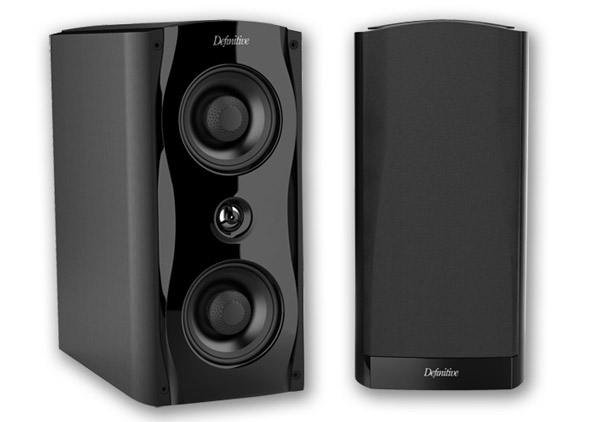 Definitive has been around since 1990 and anyone who’s spent any time reading American hi-fi magazines will be familiar with the incredibly distinctive Mythos ST and STS SuperTower speakers, thanks to the company’s long-running prominent inside front cover adverts. With their built-in subwoofers and unique oval shaped “racetrack” drivers, these tall and slender floorstanders captured my imagination, and I’ve been angling to hear a set for years. When a pair of the standmounted StudioMonitor 65 speakers came up for review, I jumped at the opportunity.
Definitive has been around since 1990 and anyone who’s spent any time reading American hi-fi magazines will be familiar with the incredibly distinctive Mythos ST and STS SuperTower speakers, thanks to the company’s long-running prominent inside front cover adverts. With their built-in subwoofers and unique oval shaped “racetrack” drivers, these tall and slender floorstanders captured my imagination, and I’ve been angling to hear a set for years. When a pair of the standmounted StudioMonitor 65 speakers came up for review, I jumped at the opportunity.
Features and Construction
The StudioMonitor 65’s are big for standmounts, with an odd form factor that actually makes a lot of sense when you consider the driver layout. Measuring 419mm tall by 383mm deep, they’re almost square from the side but that depth is necessary to house the 12-inch driver in the top panel. Hang on – a 12-inch driver in a standmounted speaker? What sorcery is this? Well, it’s one of Definitive’s “racetrack” drivers, so while it’s 12-inches long, it’s only 6-inches wide, and it’s an unpowered planar (or flat) bass radiator. The cabinet is sealed, which makes the radiator pressure coupled to the two main drivers, so it’s implemented to extend bass response without needing a port of some sort. You can’t see the racetrack driver, hidden as it is under a cloth-covered honeycomb panel, but there’s no doubt that it’s there once you hear the bass extension.
At 200mm, the front of the speaker is relatively narrow compared to the other dimensions, with a curved glossy anti-diffraction baffle housing two 5.25-inch mineral-filled polymer-coned BDSS midrange drivers and a 1-inch aluminium dome tweeter, which has been heat-treated and coated with a ceramic layer. The drivers are laid out in a D’Appolito or mid/top/mid configuration. BDSS stands for Balanced Double Surround System – basically in a BDSS driver, the cone is supported by soft rubber surrounds at both the outer and inner edges, which allows it to have a longer excursion and less distortion. These BDSS drivers are some of the strangest looking drivers I’ve seen, thanks to the mushroom-shaped Linear Response Waveguides plonked in the centre of each cone; these are claimed to smooth off-axis frequency response and disperse the sound of the drivers over a wider area.
The StudioMonitor 65’s are rated at being an 8 Ohm load and are claimed to have a very high 92 dB sensitivity, a power handling of 20-300 watts and a frequency response of 30Hz to 30kHz. The crossover network apparently features oversize inductors and Mylar capacitors to improve sound quality, and there’s an integrated Zobel network to flatten the impendence curve and make the speakers easier to drive.
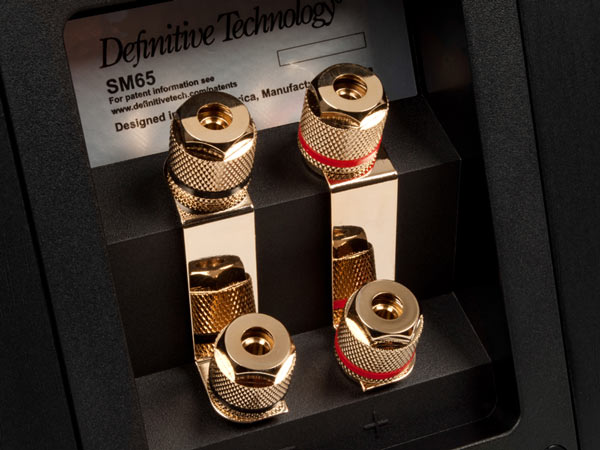 The twin pairs of binding posts are connected with plated metal links. As binding posts go, they’re solid and have flats machined into their top surfaces to allow users to crank them down on spade connectors or bare cable – they also offer banana plug connectivity. The finish is good in a utilitarian way, with the only really flashy looking bit being that glossy front baffle – the rest is all matt black – no shiny wooden veneers are available here. The internally braced cabinets aren’t all that well damped, the smaller curved cabinets of the Monitor Audio Gold GX50 mini monitors (reviewed here) present panels that are substantially more inert. Grilles are supplied, hooking up to the baffles using old school plastic plugs. Being no fan of grilles in general, they were left in the box but they’re there to tidy the looks of the speakers for those who want a little more discretion.
The twin pairs of binding posts are connected with plated metal links. As binding posts go, they’re solid and have flats machined into their top surfaces to allow users to crank them down on spade connectors or bare cable – they also offer banana plug connectivity. The finish is good in a utilitarian way, with the only really flashy looking bit being that glossy front baffle – the rest is all matt black – no shiny wooden veneers are available here. The internally braced cabinets aren’t all that well damped, the smaller curved cabinets of the Monitor Audio Gold GX50 mini monitors (reviewed here) present panels that are substantially more inert. Grilles are supplied, hooking up to the baffles using old school plastic plugs. Being no fan of grilles in general, they were left in the box but they’re there to tidy the looks of the speakers for those who want a little more discretion.
Sound Quality
I placed the speakers on the Monitor Audio stands that I had in, along with the Gold GX50’s. The size of the StudioMonitor 65’s is obvious when they’re actually on a stand, but at around 10kg, they’re not that heavy.
The review set had been run for only a couple of hours, so I set them up to run-in for a few days – there’s a note in the box with the manual recommending a few days of “conditioning” at normal listening levels, and it’s a good thing that it’s there because fresh from the box, these are the flattest and most un-dynamic speakers I’ve ever heard. Six hours later and I could have sworn that something paranormal had happened, because they magically transformed into something rather special, and kept improving for the next 24 hours or so.
Far from being flat and un-dynamic, the StudioMonitor 65’s are actually some of the most exciting loudspeakers I’ve heard in ages, particularly when we’re talking about standmounts. In a post on the Witchdoctor forums, I referred to them as the “rockingest” speakers I’ve heard in a long, long time, which is a pretty accurate summation of the sound of these speakers. Enthusiasm over nuance and subtlety is a characteristic that I ascribe to some American speakers – a punchy, dynamic and in your face sound that grabs the attention and doesn’t let it go. Whatever I played on the StudioMonitor 65’s had an intense musicality and a feeling of speed that demanded foot-tapping and plenty of air guitar action.
Some speakers convey the beauty of the music – picture an audio demonstration by a very British loudspeaker firm, with a smart suited company man informing you that “you’ll hear the delectable resonance of the triangle on the far left of the sound stage, while the deep, rumbling, hollow brass note of the oboe is clearly discernable at the rear of the acoustic space.” That’s definitely not what’s on offer here – rather it’s a guy in jeans, boots, a muscle shirt and a megaphone yelling: “LISTEN TO THAT GUITAR DUDE!!!”. There’s a time and a place for the former, many audiophiles requiring and demanding it, but if you want to enjoy your music, then the StudioMonitor 65’s do exhilaration like no other speaker I’ve encountered in this price range.
It’s difficult to qualify exactly what gives the StudioMonitor 65’s this exciting sound. The large cabinet and that big radiator mean that these speakers go low for standmounts, yet the bass is always fast and taut, sounding just like a sealed cabinet in terms of pace, with no overhang and of course, no port chuffing; but the thrill and energy aren’t all about the bass. Basically it comes down to a sensation of speed through the frequency range, right to the very top.
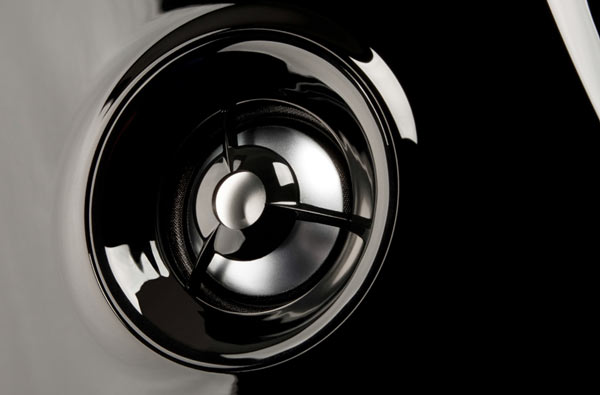 The aluminium tweeter contributes to this quality – it’s a projective sounding unit with a vivid and forward character. It’s recessed into the baffle, so it must be loaded to a degree by the short horn shape surrounding it, which explains some of its sound. Also, like many metal dome tweeters, it’s got a distinct, almost aggressive edge to it, which heightens the overall sense of speed. There’s something of a splashy nature on bright recordings, especially at high levels, and while it’s a long way removed from the smoothness of a soft dome unit, it’s not generally intrusive or harsh – just obvious. There’s no sibilance at the top but you’re never in any doubt as to the presence of the tweeter, or its material. The twin midrange drivers are also quick, and they combine with the tweeter to provide impressive attack and intensity on transients.
The aluminium tweeter contributes to this quality – it’s a projective sounding unit with a vivid and forward character. It’s recessed into the baffle, so it must be loaded to a degree by the short horn shape surrounding it, which explains some of its sound. Also, like many metal dome tweeters, it’s got a distinct, almost aggressive edge to it, which heightens the overall sense of speed. There’s something of a splashy nature on bright recordings, especially at high levels, and while it’s a long way removed from the smoothness of a soft dome unit, it’s not generally intrusive or harsh – just obvious. There’s no sibilance at the top but you’re never in any doubt as to the presence of the tweeter, or its material. The twin midrange drivers are also quick, and they combine with the tweeter to provide impressive attack and intensity on transients.
Play something that starts off with nothing but a strummed guitar, even at low volume levels and your head will nod and your feet will tap as surely as if you’re spinning hard rock. The guitars on ‘The Man Who Sold The World’ off Nirvana’s MTV Unplugged In New York immediately had me hooked, and I found that there was no way to just sit there and coolly analyse the nature of the sound I was hearing, because the music was so lively.
The guitars on ‘High School’ from The Watson Twins’ Southern Manners had a driving sound to them that they had my whole body rocking along – and this is absolutely not a rock song! This is a perplexing sensation but it’s huge fun, which is the StudioMonitor 65’s in a nutshell. The vocals on this track were clear and nicely defined while the low frequencies rumbled menacingly (which is how they’re meant to sound) considering that I wasn’t listening to floorstanders. Even ‘Shoot The Lights Out’ from the same CD had me tapping along on the floor, despite being a slow and almost sombre song. There’s no shortage of detail here; from the sound of the initial guitar to the phrasing of the two vocalists, the speakers lay everything out as clear as sunlight in the desert, with a lot of air and space around the instruments, but this detail isn’t all that tonally nuanced.
These speakers were always about the pace of the music though, and it didn’t matter what I listened to – the rhythm was always contagious. ‘Tucker’s Daughter’ and ‘Green River’ from Ian Moss’ Six Strings sounded good with plenty of weight and speed. Frank Black’s Fast Man, Raider Man was also a blast through these speakers, as were Santana’s Supernatural and Shaman CDs; which were particularly vital and dynamic. Cranking 10CC’s ‘Art For Art’s Sake’ from Greatest Hits And More to massively high volume levels (far more than I usually apply to most review speakers and literally loud enough to chase the neighbor out of her house – how was I to know that she was home in the mid afternoon?) showed that the weighty bass stayed controlled regardless of how much power I threw at them, but the recording’s bright balance meant that the treble got out of hand and I couldn’t take it for too long. The speakers sounded unburstable though, with no sense of compression as the power and noise rolled upwards. They don’t need loads of power but they’re not averse to it, either.
They don’t offer anything close to a laid-back presentation – it’s not even in the same vicinity as mellow, but they’re none the worse for that. As long as the recording isn’t too bright or harsh, then the sound has been judged finely enough so as not to be fatiguing, at least to my tastes, but if you’re looking for a warm, rich presentation, look elsewhere. They’re not lean thanks to all that bass, but they are explicit and forceful – more like professional monitors than anything else. This comes back down to my perception of the American sound: if you value musical excitement over all things, then these (and other American speakers) will rock you.
The StudioMonitor 65’s should be reasonably tolerant of a good range of components and they seem to be easy enough to drive. They won’t much like partnering with overly bright or forward sounding amplification or sources though; that would likely be too much of a good thing, so some sympathy in system matching is critical here.
Placement And Soundstaging
While Definitive states that the StudioMonitor 65’s are designed for both stand or shelf placement, it’s hard to see how they’d do well on a shelf, because they sound best with some space around them. Admittedly there’s no port to worry about, but that top radiator still makes its presence felt if they get too close to the rear wall.
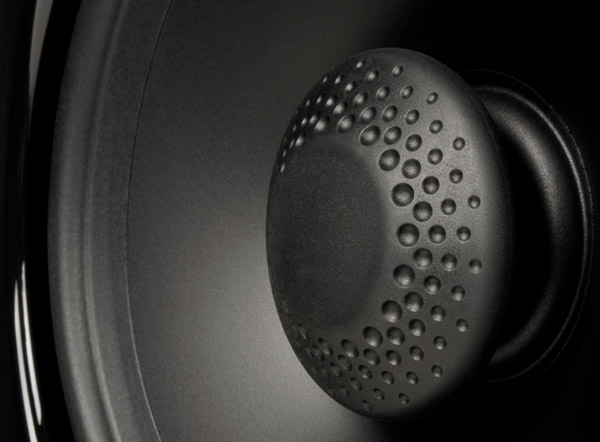 I settled on having them sited with the rear panel at least 45cm from the wall, and they needed a heavy toe-in to get the soundstage to come into some kind of a focus (even more than the user manual suggests). This exacerbates the treble but it’s the best compromise. Even then, while the soundstage was broad, it was quite shallow and they never quite vanished as much as I would have hoped despite the MTM driver layout, so I was always somewhat aware of their presence. I tried moving the speakers well into the room but this aspect of their performance never really improved. The imaging was diffuse, without the ‘locked in space’ quality often found in standmounted speakers – the Linear Response Waveguides lurking in the midrange drivers are designed to disperse “sound over a wider area for crystal clear intelligibility for every listener in the room”, which they obviously do, and that’s all very well but it surely does cut down on the precision of the image placement.
I settled on having them sited with the rear panel at least 45cm from the wall, and they needed a heavy toe-in to get the soundstage to come into some kind of a focus (even more than the user manual suggests). This exacerbates the treble but it’s the best compromise. Even then, while the soundstage was broad, it was quite shallow and they never quite vanished as much as I would have hoped despite the MTM driver layout, so I was always somewhat aware of their presence. I tried moving the speakers well into the room but this aspect of their performance never really improved. The imaging was diffuse, without the ‘locked in space’ quality often found in standmounted speakers – the Linear Response Waveguides lurking in the midrange drivers are designed to disperse “sound over a wider area for crystal clear intelligibility for every listener in the room”, which they obviously do, and that’s all very well but it surely does cut down on the precision of the image placement.
Conclusion
The StudioMonitor 65’s responded very well to the clean and powerful sound of the Parasound Model 2100 preamp and Model 2125 power amp pairing that I had in for review, and the sense of speed was further enhanced when I replaced the basic copper cabling with some of Nordost’s seriously quick Blue Heaven II speaker cable and interconnects.
However, they were at their dramatic best with faster and more capable amplification. The speakers should theoretically have been well out of their depth but they had no hassles showing off what my Viganoni and Viganoni Sachem monoblock power amps could do. These amps are among the quickest and most dynamic I’ve heard for less than silly money, and with the Rogue Audio Metis Magnum preamp (reviewed here) and my Marantz SA8260 SACD player in the loop, the speakers just blasted along, making everything from rock to folk sound acutely involving.
I’m not talking about the emotional involvement that comes from the beauty of the music, or immersive textural detailing that creates that sense of intimacy, but rather the sheer addiction of a presentation this intense. I’ve heard more detail, more bass and a more neutral character, hell I’ve heard more of a great number of things on any number of the speakers that I’ve reviewed, but I don’t recall hearing quite this much exhilaration from anything short of powered near-field monitors.
The rather basic looks and finish ceased to worry me after a while – there are heaps of more polite options with deep glossy veneers out there; you buy these for their sound. The overall sound quality was more than I expected from speakers at this price point, and while it definitely won’t be everyone’s cup of Earl Grey tea, it’ll appeal to some folk in the way that a giant sized mug of extra dark, strong filter coffee with six sugars does. I really liked these speakers, andthey’ll be one of my first choices when I finally get round to getting my second system up and running.
The StudioMonitor 65’s aren’t flawless, and they’re certainly not ultra-neutral audiophile instruments, but they absolutely, positively make music fun. They’re very nicely priced considering their performance – it’s hard to believe that this much dynamism is available for this kind of money. Try them first – you’ll know very quickly if they’re your type of speaker. ASHLEY KRAMER

